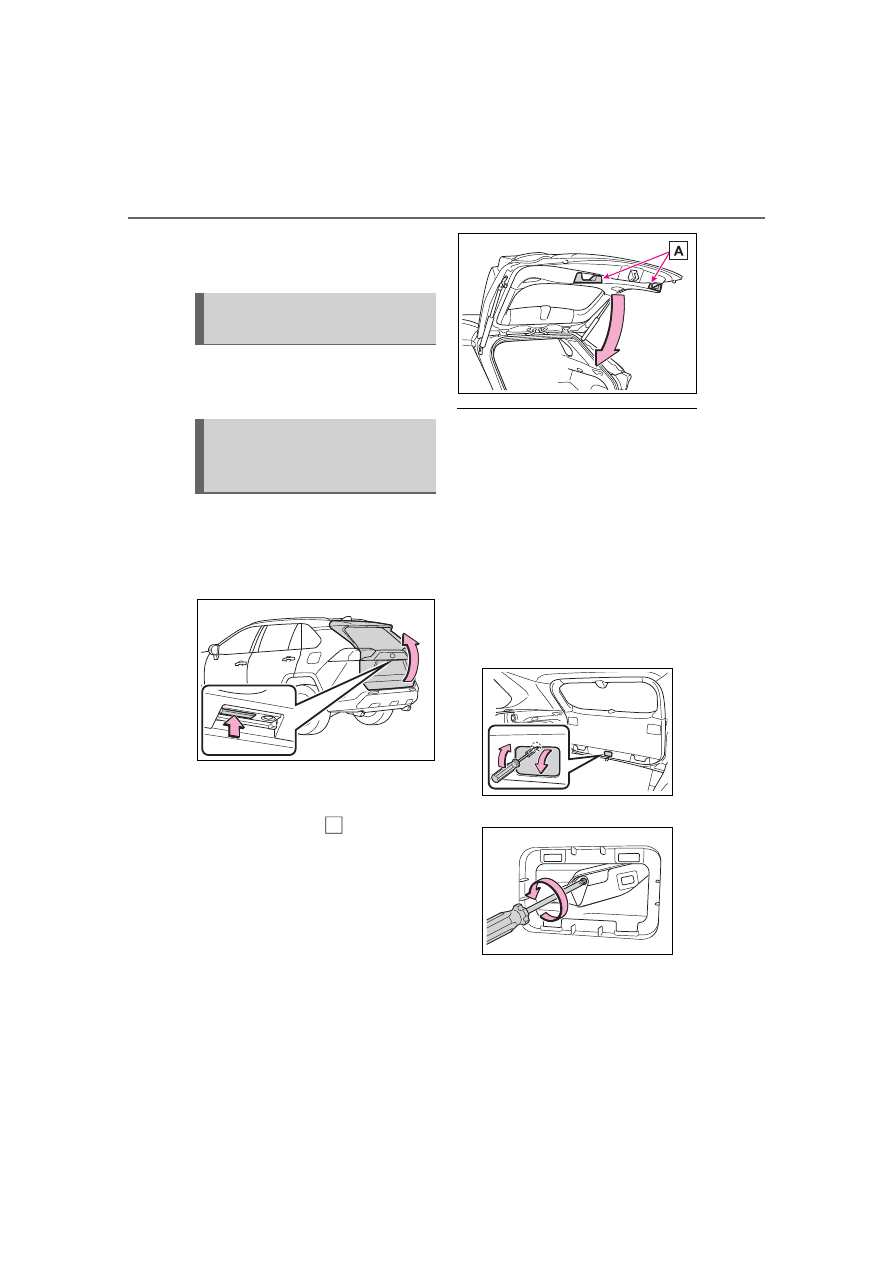Toyota RAV4 (2023 year). Manual in english - page 8

128
3-2. Opening, closing and locking the doors
electronic key, the key may be
detected as being in the vehicle. In
this case, vehicle may be unlocked.)
■
Using the door lock switch
■
Open
Raise the back door while
pressing up the back door
opener switch.
■
Close
Lower the back door using the
back door handle
, and make
sure to push the back door
down from the outside to close
it.
Be careful not to pull the back door
sideways when closing the back
door with the handle.
■
Luggage compartment light
●
The luggage compartment light
turns on when the back door is
opened.
●
When the engine switch is turned
to OFF, the light will go off auto-
matically after 20 minutes.
■
If the back door opener is inop-
erative
The back door can be unlocked
from the inside.
1
Remove the cover.
To prevent damage, cover the tip of
the screwdriver with a rag.
2
Loosen the screw.
3
Turn the cover.
Unlocking and locking the
back door from the inside
Opening/closing the back
door (vehicles without
power back door)
A